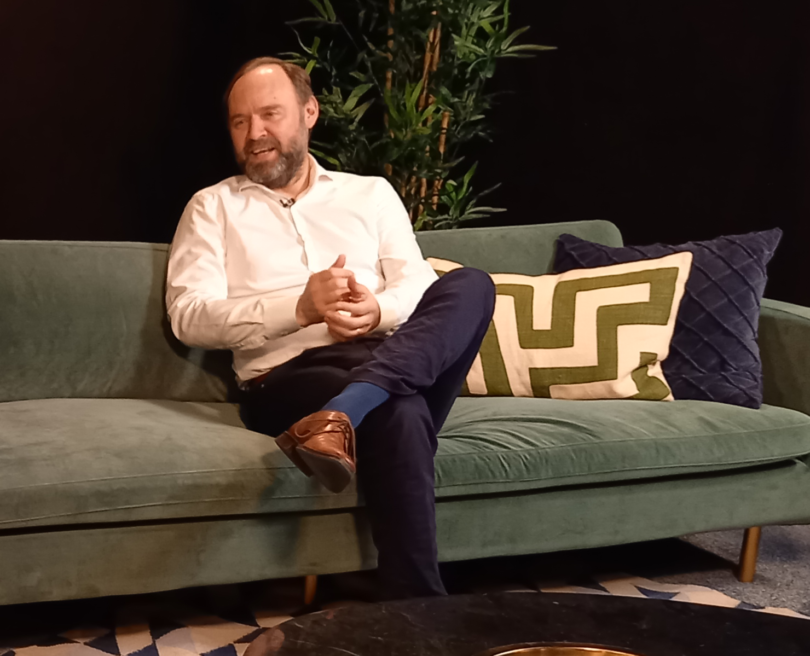As part of continuing his legacy, we highlight an inspiring interview with Peter De Prins, former co-founder of LQ.
On the occasion of the launch of the book ‘Six Batteries of Change’ in 2018, he gave an interview for publication in the online magazine of Management Boek.
We present a translated version below.
Context of the interview: The model Six Batteries of Change is a refreshing way to look at transformation in organisations. Based on thorough cross-disciplinary research, authors Peter de Prins, Kurt Verweire and Geert Letens developed an innovative and integrative model. It combines insights from leadership, strategy, operations management, culture and people management in one simple model.
Who is your book intended for?
“Our book focuses on executives, i.e. people with a certain decision-making power who can initiate change and who will be confronted with it the most. The term executive should be seen in a broad sense, certainly not in a purely hierarchical sense: we refer to people in positions of power, although a manager who occasionally initiates a small change process in his own department will not immediately feel addressed. Nor is the book intended for employees who suddenly find themselves facing all sorts of changes and want to know how to deal with them.”
There is already a great deal of literature on change management. What is wrong with it, in your opinion?
“Our book and the model it contains, are not so much a reaction against existing theories but an addition of something really new: no model has been developed before based on organisational energy. There is little about it. This, whilst we know from the history of change efforts that a lack of energy in the organisation and therefore also in its leaders is the main reason why change comes to a standstill.
A second innovative aspect is that few books bring together the different perspectives on change. Either it is about strategy, or project implementation, or top-down approach, or the human angle. We managed to bring all four together.
A third novelty is that we no longer present the process of change as something sequential, as we were all taught in the past: if you first do this, then that will happen. Change is integrative and inclusive, which means that change is a continuous process in which everything happens at once and in which all aspects of the organisation are involved. Change is much more unpredictable than we often assume.”
You state that successful change is not possible without influencing people.
“This is true. Many companies pride themselves on having devised a good strategy and drawn up an attractive plan for the future. This creates high expectations: ‘now it will work’. But especially in the last ten years, the impact of forces such as corporate culture, EQ, the possibility of development, has become clear. It is therefore important to develop a strategy that motivates people, touches them, and ensures that the message you bring is also felt in the workplace. Otherwise, disbelief grows and satisfaction falls.”
Successful change is a combination of the rational and the emotional side of change, is one of the key messages of your book.
“Correct. The aim of the model is to help organisations to emotionalise the rational aspects of the change process and to rationalise the emotional aspects more, to make them measurable. One of the six batteries we distinguish, is the top team battery, the highest level of leadership of organisational change that provides the ambition, the meaning, and the clarity. Teamwork at that level is hardly ever measured. I recently attended a meeting of a leadership-team with 7 members of a large organisation. It turned out that these people had never spent even an hour talking to each other about their cooperation. They did spend thousands of hours talking about numbers and projects.”
Can you tell us something about the model and how it came into being?
“Since 1999 I have been an entrepreneur and work as a trainer, consultant and coach, and since 2010 I have been working in the academic world. Our model is the result of practical research and analysis of change projects in recent years. In this way, we determined six force fields, six sources of energy that are active in organisations; three rational and three emotional, in a model that shows the direction of change from left to right. Literally central, in the middle, are the structure and culture battery, which act as a catalyst to implement the desired changes, from the top to the work floor and vice versa. Ideally, all the batteries should be sufficiently charged; only one needs to be in the red to significantly reduce the chances of a successful change process.”
One of the batteries is the strategy battery mentioned earlier. In the chapter devoted to it, you call planning a danger. Why?
“Well, planning, in itself, is not bad, of course, but the danger of plans is that they can become sacred at a certain point. Defined plans offer a kind of false security, especially in very dynamic, unpredictable markets or in times of crisis, and are only a source of frustration because it simply turns out to be very difficult to assess things properly under those circumstances.”
An important part of the strategy battery: as a company, also state what you are not going to do.
“Certainly. Strategy is about the ‘how’ question. How can we achieve our goal? It is a fact of life that people are easily seduced, especially when financial gain is at stake, but still, it is important to let a lucrative opportunity for profit slip away, if it contradicts one’s strategy.”
Why not seize such an opportunity?
“Because it creates uncertainty on all sides. Before you know it, you are stuck in the middle: you want to do both everything for your customer and deliver the best product at the best price; in the end, that is just not possible. In the process, the message to the customer also becomes more ambiguous, more diffuse.”
In the chapter about the infrastructure battery, you observe that organisations only take action after a failure.
“Often, one only gets into action when things threaten to go wrong or have already gone wrong. In that case, one only reacts to a mistake, and there is no autonomous intervention. But reacting to something that goes wrong is usually not the way it should be. Do you play golf? In golf, the second stroke is often a correction of the first. If the first one went too far to the left, you are almost sure that the second one will go to the right, whereas the point is to hit your best shot to reach the green as soon as possible. Therefore, there is little point in reacting to the first stroke with the second.
In our research, we eventually came up with several ‘change pathologies’, patterns of energy shortage in organisations: chronically ill organisations, autistic organisations, delirious organisations, and the toughest category, the paralysed organisation; in which the head still functions well, but the limbs do not want to listen. The management comes up with one plan after another, which are turned into wonderful strategies. But once the plan is presented and put into action, nothing happens, nobody moves. The frustration that this creates, creates more dissatisfaction, and then a vicious circle threatens to emerge. Working on all batteries is working on the success of change. For many organisations, there is a lot of work to be done. Others, on the other hand, have understood it well. And you will soon see them come to the fore. Or are already there.”
Translated from the original interview of author Erik de Vries, freelance journalist for online magazine Management Boek (March 9, 2018)



